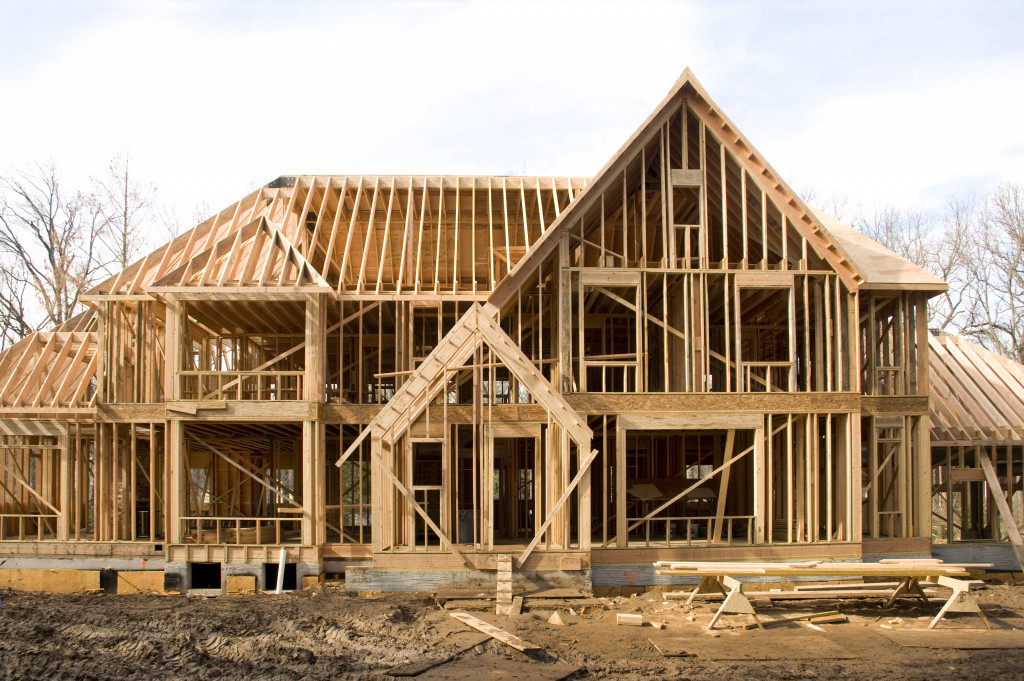Building a home from scratch can give you the house of your dreams—perfectly customized and built exactly how you want it to be. However, it’s no secret that building a house instead of buying one tends to be more expensive, especially if you plan to include a lot of customization. Nevertheless, this shouldn’t stop you from building your dream home.
Although building a house from scratch requires quite a bit of an investment, there are a lot of ways you can trim down the costs. Here are some of the best ones that you should keep in mind:
1. Go for a stock home plan
When building a home, you would usually have to hire an architect and a few engineers to create blueprints for your house. Hiring these professionals does not come cheap, so if you want to cut down a few of your expenses, you can consider going for a stock home plan instead.
A stock home plan is a premade plan that you can buy in lieu of hiring an architect or engineer. The cost of a premade plan is way lower than hiring professionals to make a new plan from scratch, and there is a multitude of sources online for stock home plans that you can choose from. Find one that fits your vision and budget the best, and then hire someone to make adjustments to the plans if needed.
2. Hire the right contractor
Hiring the right contractor can save you a ton of money in home construction. Look for a reputable company such as Cheney Builders that specializes in building custom homes. With their experience and expertise in custom home building, they can help you cut out unnecessary costs and trim down the overall price tag of the project. From sourcing construction materials to hiring subcontractors, having the right contractor by your side can certainly help keep your new home within the budget.
3. Estimate the cost of your must-haves
You already likely have a few things in mind that you want to have in your custom home. Whether it is absolute must-haves or optional nice-to-haves, knowing how much they cost can help you create a more cost-effective house plan.
For example, if you want hardwood floors in your new home, get a rough estimate of how much they will cost per square foot. Once you have your finalized house plan, you can have a more accurate estimate of how much you will spend on hardwood floors in the areas that you want to cover. If they are within the budget, then that’s great. But if not, you can still explore more affordable options before construction starts.

4. Buy materials yourself
General contractors and subcontractors may charge you more if they have to pay for the construction materials upfront. That said, it is a great money-saver if you offer to purchase the materials from the suppliers yourself—you will be paying for them through your contractors anyway, so why not pay directly at the source?
Furthermore, some contractors or subcontractors may be willing to give you a discount if you purchase the construction materials yourself. On top of that, suppliers may offer you a discount in exchange for paying for the materials in full.
5. DIY
If you have the right tools and skill set, you will likely be able to do some small projects yourself and save a substantial amount of money from your final construction bill. Examples of projects that you can DIY include painting the walls, installing small hardware, and putting up shelves, among many others.
6. Ask for help
Use your connections with friends and family to source cheap materials, find good laborers, or simply help you out with your DIY projects. Who knows? Maybe a few of your friends know someone who knows someone that can help you get a good deal on construction materials, appliances, and other things you need for your new custom home.
7. Leave the expensive “wants” for later
If the expensive nice-to-haves are out of the budget, leave them out of your house plan for now—but make sure that your house can accommodate them in the future. For example, if you want a Jacuzzi but cannot afford one now, designate a space for it in the house plan for future construction.
Building a custom home can take a lot of time and money, but the end result is always worth it in the end. Although this route of homeownership may be a little more costly, there are a lot of ways you can keep your expenses at a minimum, starting with the ones mentioned above.
